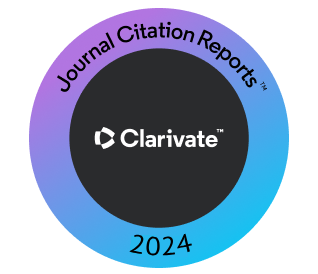A Spatio-Temporal Deep Learning Approach for Efficient Deepfake Video Detection
DOI:
https://doi.org/10.14500/aro.12190Keywords:
Deep learning, DeepFake detection, EfficientNet, Spatio-temporal ModelingAbstract
Deepfake videos have grown to be a big concern in the modern digital media landscape as they cause difficulties undermining the legitimacy of channels of information and communication. Humans often find it challenging to tell the difference between a fake and a genuine video due to the increasing realism of facial deepfakes. Identification of these misleading materials is the first step in preventing deepfakes from spreading through social media. This work introduces Spatio-temporal Intelligent Deepfake Detector (STIDD), a deep learning system including enhanced spatial and temporal modeling techniques. By means of a pre-trained EfficientNetV2-B0 model, the proposed framework efficiently extracts spatial characteristics from each frame, subsequently, and Bidirectional Long Short-Term Memory layers help to capture temporal relationships from video sequences. We evaluate STIDD on the FaceForensics++ (FF++) dataset encompassing all five manipulation techniques (DeepFakes, FaceSwap, Face2Face, FaceShifter, and NeuralTextures). The experimental results reveal that STIDD achieved precision, recall, and F1-scores all higher than 0.99 and a final test accuracy of 99.51% on the combined FF++ test set. The results demonstrate that the integration of sophisticated spatial extraction and strong temporal modeling allows STIDD to achieve high detection performance while maintaining computing efficiency at just 0.39 Giga Floating-Point Operations (GFLOPs) per inference.
Downloads
References
Al-Adwan, A., Alazzam, H., Al-Anbaki, N., and Alduweib, E., 2024. Detection of deepfake media using a hybrid CNN-RNN model and particle swarm optimization (PSO) algorithm. Computers, 13(4), p.99. DOI: https://doi.org/10.3390/computers13040099
Alanazi, F., Ushaw, G., and Morgan, G., 2023. Improving detection of DeepFakes through facial region analysis in images. Electronics, 13(1), p.126. DOI: https://doi.org/10.3390/electronics13010126
Alhaji, H.S., Celik, Y., and Goel, S., 2024. An approach to deepfake video detection based on ACO-PSO features and deep learning. Electronics, 13(12), p.2398. DOI: https://doi.org/10.3390/electronics13122398
Alom, M.Z., Taha, T.M., Yakopcic, C., Westberg, S., Sidike, P., Nasrin, M.S., Hasan, M., Van Essen, B.C., Awwal, A.A.S., and Asari, V.K., 2019. A state-of the-art survey on deep learning theory and architectures. Electronics, 8(3), p.292. DOI: https://doi.org/10.3390/electronics8030292
Alrajeh, M., and Al-Samawi, A., 2025. Deepfake image classification using decision (Binary) tree deep learning. Journal of Sensor and Actuator Networks, 14(2), p.40. DOI: https://doi.org/10.3390/jsan14020040
Day, C., 2019. The future of misinformation. Computing in Science and Engineering, 21(1), pp.108-108. DOI: https://doi.org/10.1109/MCSE.2018.2874117
Gong, D., Kumar, Y.J., Goh, O.S., Ye, Z., and Chi, W., 2021. DeepfakeNet, an efficient deepfake detection method. International Journal of Advanced Computer Science and Applications, 12(6), pp.201-207. DOI: https://doi.org/10.14569/IJACSA.2021.0120622
Gupta, G., Raja, K., Gupta, M., Jan, T., Whiteside, S.T., and Prasad, M., 2023. A comprehensive review of DeepFake detection using advanced machine learning and fusion methods, Electronics, 13(1), p.95. DOI: https://doi.org/10.3390/electronics13010095
Heidari, A. et al. (2024) ‘Deepfake detection using deep learning methods: A systematic and comprehensive review’, Wiley Interdisciplinary Reviews: Data Mining and Knowledge Discovery, 14(2), p. e1520. Available at: https://doi. org/10.1002/WIDM.1520. DOI: https://doi.org/10.1002/widm.1520
Hong, Y., Hwang, U., Yoo, J., and Yoon, S., 2019. How generative adversarial networks and their variants work. ACM Computing Surveys (CSUR), 52(1), pp.1-43. DOI: https://doi.org/10.1145/3301282
Ibnouzaher, A., and Moumkine, N., 2024 Enhanced Deepfake Detection using a Multi-Model Approach. In: International Conference on Digital Technologies and Applications. Vol. 1101, pp.317-325. DOI: https://doi.org/10.1007/978-3-031-68675-7_31
Jameel, W.J., Kadhem, S.M., and Abbas, A.R., 2022. Detecting Deepfakes with deep learning and gabor filters. ARO-the Scientific Journal of Koya University, 10(1), pp.18-22. DOI: https://doi.org/10.14500/aro.10917
Jung, T., Kim, S., and Kim, K., 2020. DeepVision: Deepfakes detection using human eye blinking pattern. IEEE Access, 8, pp.83144-83154. DOI: https://doi.org/10.1109/ACCESS.2020.2988660
Kaur, A., Hoshyar, A.N., Saikrishna, V., Firmin, S., and Xia, F., 2024. Deepfake video detection: Challenges and opportunities. Artificial Intelligence Review, 57(6), pp.1-47. DOI: https://doi.org/10.1007/s10462-024-10810-6
Korshunov, P. and Marcel, S. (2022) ‘The Threat of Deepfakes to Computer and Human Visions’, Advances in Computer Vision and Pattern Recognition, pp. 97–115. Available at: https://doi.org/10.1007/978-3-030-87664-7_5. DOI: https://doi.org/10.1007/978-3-030-87664-7_5
Li, X., Zhou, H., and Zhao, M., 2024. Transformer-based cascade networks with spatial and channel reconstruction convolution for DeepFake detection. Mathematical Biosciences and Engineering, 21(3), pp.4142-4164. DOI: https://doi.org/10.3934/mbe.2024183
Liu, M.Y., Huang, X., Yu, T.C., and Mallya, A., 2021. Generative adversarial networks for image and video synthesis: Algorithms and applications. Proceedings of the IEEE, 109(5), pp.839-862. DOI: https://doi.org/10.1109/JPROC.2021.3049196
Luo, A., Kong, C., Huang, J., Hu, Y., Kang, X., and Kot, A.C., 2024. Beyond the prior forgery knowledge: Mining critical clues for general face forgery detection. IEEE Transactions on Information Forensics and Security, 19, pp.1168-1182. DOI: https://doi.org/10.1109/TIFS.2023.3332218
Maiano, L., Papa, L., Vocaj, K., and Amerini, I., 2023. DepthFake: A Depth Based Strategy for Detecting Deepfake Videos. In: Lecture Notes in Computer Science (Including Subseries Lecture Notes in Artificial Intelligence and Lecture Notes in Bioinformatics). Vol. 13646. LNCS. Springer, Berlin, pp.17–31. DOI: https://doi.org/10.1007/978-3-031-37745-7_2
Mitra, A., Mohanty, S.P., Corcoran, P., and Kougianos, E., 2022. EasyDeep: An IoT friendly robust detection method for GAN Generated deepfake images in social media. In: IFIP Advances in Information and Communication Technology. Vol. 641. Springer, Berlin, pp.217-236. DOI: https://doi.org/10.1007/978-3-030-96466-5_14
Mubarak, R., Alsboui, T., Alshaikh, O., Inuwa-Dutse, I., Khan, S., and Parkinson, S., 2023. A survey on the detection and impacts of deepfakes in visual, audio, and textual formats. IEEE Access, 11, pp.144497-144529. DOI: https://doi.org/10.1109/ACCESS.2023.3344653
Pawelec, M., and Pawelec Mariapawelec, M., 2022. Deepfakes and democracy (Theory): How synthetic audio-visual media for disinformation and hate speech threaten core democratic functions. Digital Society, 1(2), pp.1-37. DOI: https://doi.org/10.1007/s44206-022-00010-6
Qadir, A., Mahum, R., El-Meligy, M.A., Ragab, A.E., AlSalman, A., and Awais, M., 2024. An efficient deepfake video detection using robust deep learning. Heliyon, 10(5), p.e25757. DOI: https://doi.org/10.1016/j.heliyon.2024.e25757
Rossler, A., Davide, C., Luisa, V., Christian, R., Justus, T., and Matthias, N., 2019. FaceForensics++: Learning to Detect Manipulated Facial Images. In: IEEE/CVF International Conference on Computer Vision (ICCV), pp.1-11. DOI: https://doi.org/10.1109/ICCV.2019.00009
Shahzad, H.F., Rustam, F., Flores, E.S., Luís Vidal Mazón, J., De la Torre Diez,I., and Ashraf, I., 2022. A review of image processing techniques for DeepFakes. Sensors, 22(12), pp.4556-4584. DOI: https://doi.org/10.3390/s22124556
Sridevi, K., Kanaprthi, S.K., Sameera, N., Garapati, Y., Krishnamadhuri, D., and Bethu, S., 2022. ‘IoT Based Application Designing of Deep Fake Test for Face Animation. ACM International Conference Proceeding Series, pp.24-30. DOI: https://doi.org/10.1145/3555962.3555967
Xia, Z., Qiao, T., Xu, M., Wu, X., Han, L., and Chen, Y., 2022. Deepfake video detection based on mesonet with preprocessing module. Symmetry, 14(5), p.939. DOI: https://doi.org/10.3390/sym14050939
Xu, Y., Liang, J., Jia, G., Yang, Z., Zhang, Y., and Ran, H., 2023. TALL: Thumbnail Layout For Deepfake video detection. In: Proceedings of the IEEE International Conference on Computer Vision, pp.22601-22611. DOI: https://doi.org/10.1109/ICCV51070.2023.02071
Zhao, C., Wang, C., Hu,G., Chen, H., Liu, C., and Tang, J., 2023. ISTVT: Interpretable spatial-temporal video transformer for deepfake detection. IEEE Transactions on Information Forensics and Security, 18, pp.1335-1348. DOI: https://doi.org/10.1109/TIFS.2023.3239223
Downloads
Published
How to Cite
Issue
Section
License
Copyright (c) 2025 Raman Z. Khudhur, Marwan A. Mohammed

This work is licensed under a Creative Commons Attribution-NonCommercial-ShareAlike 4.0 International License.
Authors who choose to publish their work with Aro agree to the following terms:
-
Authors retain the copyright to their work and grant the journal the right of first publication. The work is simultaneously licensed under a Creative Commons Attribution License [CC BY-NC-SA 4.0]. This license allows others to share the work with an acknowledgement of the work's authorship and initial publication in this journal.
-
Authors have the freedom to enter into separate agreements for the non-exclusive distribution of the journal's published version of the work. This includes options such as posting it to an institutional repository or publishing it in a book, as long as proper acknowledgement is given to its initial publication in this journal.
-
Authors are encouraged to share and post their work online, including in institutional repositories or on their personal websites, both prior to and during the submission process. This practice can lead to productive exchanges and increase the visibility and citation of the published work.
By agreeing to these terms, authors acknowledge the importance of open access and the benefits it brings to the scholarly community.
Accepted 2025-06-19
Published 2025-08-05















 ARO Journal is a scientific, peer-reviewed, periodical, and diamond OAJ that has no APC or ASC.
ARO Journal is a scientific, peer-reviewed, periodical, and diamond OAJ that has no APC or ASC.